We Are Here to Help!
Get pricing details and strategies that will work for your business.
Veterinary clinics must adapt their marketing strategies to reach a broader audience effectively in the evolving veterinary industry. Google PPC (Pay-Per-Click) marketing is a powerful tool that can help veterinarians connect with pet owners actively searching for their services. By mastering Google PPC, you can enhance your clinic's online presence, attract more clients, and ultimately provide better care to our furry friends. In this comprehensive guide, we'll walk you through the steps to create an effective Google PPC marketing strategy for your veterinary clinic, complete with practical examples.
What is Google PPC?
Google PPC, or Pay-Per-Click, is an online advertising model that operates on a simple premise: advertisers pay a fee each time someone clicks on their ad. Imagine it as placing an ad in a pet magazine or running an email marketing campaign, but here's the kicker – you only pay when a potential client takes action, like calling your clinic or visiting your website by clicking on your ad. For example, picture this scenario: someone in your town searches for "emergency vet." That's where Google PPC steps in.
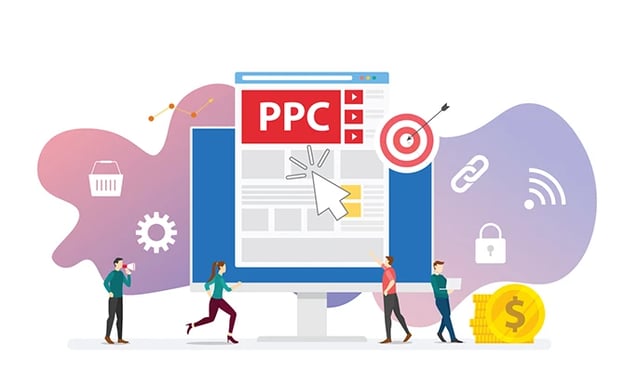
Your PPC ad can appear right at the top of Google's search results, instantly capturing the attention of pet owners in need. Not to forget the possibility of incorporating Bing ads to widen the reach and improve brand awareness.
Google Ads through Google PPC empower businesses like yours to enhance your online presence, attract valuable leads, and achieve your marketing objectives. Whether you're a seasoned digital marketer or just embarking on your veterinary clinic's online advertising journey, you're in the right place to harness the potential of local SEO with Google Ads.
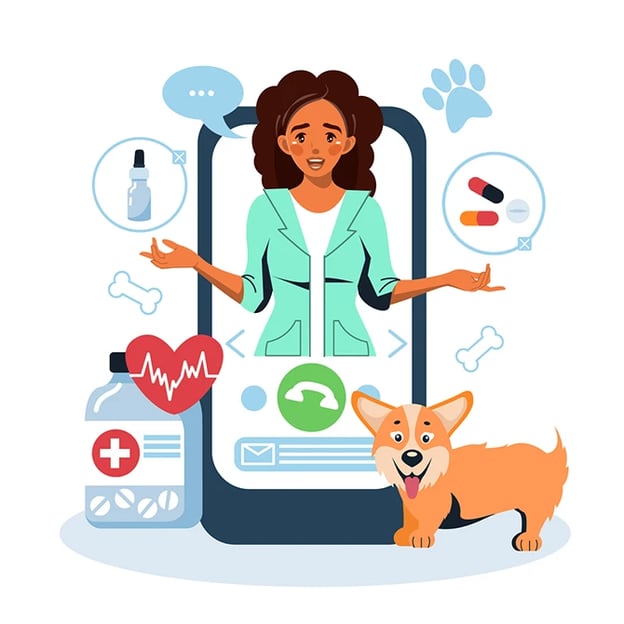
How Does Google PPC Work?
Google PPC works through an auction-based system. When a pet owner enters a query on a search engine, Google's algorithm determines which veterinary service ads to display based on bid amount, ad relevance, and ad quality. The highest bidder doesn't necessarily win; the ad's relevance plays a crucial role. Your veterinary advertising's position is determined by your bid multiplied by your Quality Score.
Example:
- Your veterinary clinic bids $2 for the keyword “pet vaccinations.”
- Your competitor bids $3 for the same keyword.
- Your ad, with a High Quality Score, may appear above your competitor's ad, even though you bid less.
The reason for this is that high-quality ads get more clicks, and even though Google is getting less per click by showing the $2 bid over the $3 bid - in the long run, more clicks means more revenue for Google.
Set Up Your Google PPC Veterinary Marketing Campaign
Now that you understand the basics, you can now set up your Google PPC veterinary marketing campaign. It is best to start by defining your digital marketing goals. Then you identify the keywords that the target audience might use to find your services. Use tools like Google Keyword Planner to discover relevant keywords with substantial search volume.

After that, organize your campaign into specific ad groups based on related keywords to help improve ad relevance. When you already know what you want to get out of your Google PPC and what search strings will bring users to your ads, you must now write a compelling ad copy that highlights your clinic's unique selling points. Mention services, expertise, and any special offers or discounts you're promoting.
Be prepared to receive traffic through landing pages on your site. Ensure your PPC ads link to the dedicated landing pages on your website. You want your ads to link to the page on your website that has the content that is most relevant to the ad copy. Your website design and copy should provide detailed information about the specific services mentioned in the ads, making the user experience seamless.
Here are some examples:
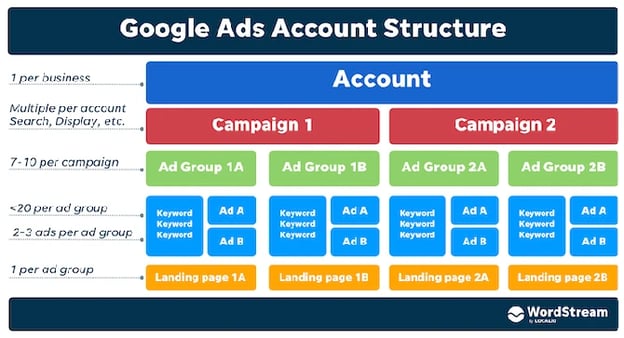
Illustration from Word Stream.
- Ad group: Emergency Vet
- Keywords: "emergency vet," "24/7 vet," "urgent pet care"
- Ad Copy: "Immediate Pet Care | 24/7 Emergency Vet Services"
- Landing Page: A page highlighting your clinic's emergency services, contact information, and directions.
- Ad group: Pet Vaccinations
- Keywords: "pet vaccinations," "dog vaccine schedule," "cat vaccination clinics"
- Ad Copy: "Protect Your Pet’s Health | Comprehensive Vaccination Services"
- Landing Page: A page highlighting your vaccination services, including information on recommended schedules, vaccine types, and the importance of pet immunization.
- Ad group: Spay and Neuter Clinic
- Keywords: "spay and neuter," "affordable pet sterilization," "veterinary spaying"
- Ad Copy: "Safe and Affordable Pet Sterilization | Spay & Neuter Clinic"
- Landing Page: A page outlining your spaying and neutering services, their importance, pricing, and how to schedule an appointment.
- Ad group: Pet Dental Care
- Keywords: "pet dental cleaning," "dog teeth cleaning," "cat dental check-up"
- Ad Copy: "Bright Smiles for Pets | Expert Dental Care Services"
- Landing Page: A page specifically focused on your dental care services, including information on procedures, benefits, and appointment scheduling.
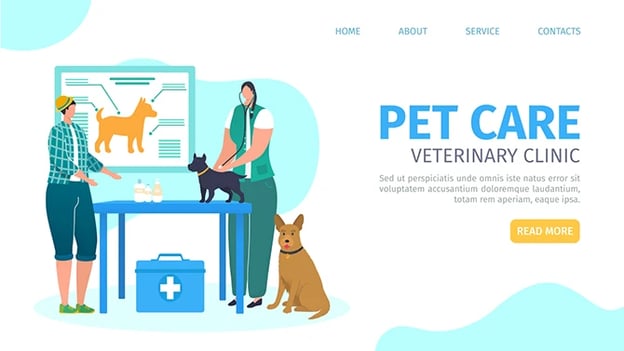
You might want to check out the top 96 Veterinarian keywords from serpwars.
Remember, you’ll only pay for the clicks, but not all clicks are equal. You have to set a daily or monthly paid advertising budget that aligns with your objectives. Choose between manual or automated bidding strategies based on your experience and comfort level.
Example:
- Ad Spend Daily Budget: $50
- Bidding Strategy: Manual CPC (Cost-Per-Click) with a maximum bid of $2 for relevant keywords.
Given these settings, you could potentially get around 25 clicks per day ($50 budget / $2 maximum bid per click). Note that the actual number of clicks may vary based on factors like keyword competition and the quality of your ads.
If you think you need help in setting this up, you can always hire a veterinary marketing services or a veterinarian PPC agency to ensure better results for paid search. You can try to get expert help from Doctor of Marketing.
It's also worth mentioning that in highly competitive markets or for very popular keywords, your budget may be exhausted quickly, resulting in fewer clicks than anticipated. To maximize the effectiveness of your campaign, let’s talk about how you can continuously monitor and adjust your settings based on your campaign's performance and goals.
Optimize Your Google PPC Campaign
Creating a successful Google PPC strategy for vets means fine-tuning your ads for the best results. You need to keep adapting and making things better.
One big part of this is improving your Quality Score, which affects how well your ads perform. To do this, you work on making your ads match what people are searching for and improving things such as the quality of your landing page. For example, if someone's looking for "pet dental care," your ad and the page it leads to should be all about that. Doing so will make them more likely to book an appointment for their pet.
Another important factor is using "negative keywords." These are words you don't want to be associated with your ads. For example, if you don't want your Instagram posts to show up when people search for something totally unrelated. So, you tell Google not to show your ads with certain words. This saves money and keeps your ads on track.
Example of negative keywords you can use:
- Free: To avoid clicks from users looking for free veterinary services.
- Jobs: To exclude job-related queries that are not relevant to your services.
- DIY: To filter out do-it-yourself queries, like DIY pet care.
- Home remedies: To exclude users searching for home treatments instead of professional veterinary care.
- Low-cost: To avoid clicks from users seeking low-cost or budget services.
- Volunteer: To prevent clicks from people looking for volunteer opportunities instead of veterinary care.
- Pet adoption: To filter out users interested in adopting pets rather than seeking veterinary services.
- Training: To exclude queries related to pet training, which is a different service.
- Pet insurance: To avoid clicks from people searching for insurance, not veterinary care.
- Pet loss: To filter out searches related to pet loss support and services.
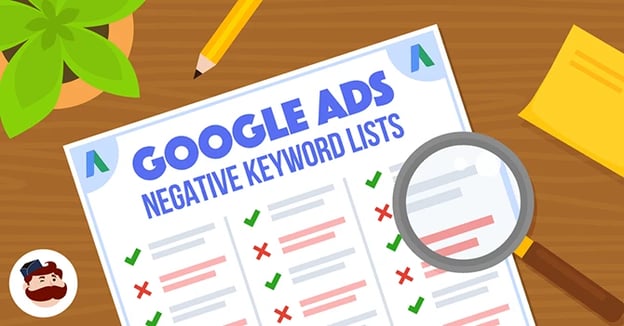
Image is from Ad Espresso.
Next, you should always be testing your ads to see what works best. It's similar to trying out different Instagram captions to see which one gets the most likes. By tracking how well your ads are doing and where they're working best, you can make your campaign even better. You can also implement ad scheduling to display your ads during the times when your clinic is open and can respond to inquiries promptly. Then also adjust bidding strategies based on the time of day or week when you expect higher conversion rates.
Lastly, you can use location targeting to make sure your ads reach the right people in the right places. This helps you use your budget wisely, reaching potential clients near your vet clinic.
Strategizing a great Google PPC effort for your veterinary practice involves fine-tuning your ads, improving your Quality Score, using negative keywords, testing your ads, scheduling your ads, and targeting the right locations. These tricks help your campaign work better and get more pet owners to choose your clinic.
Integrating Google PPC with Other Strategies
Relying solely on PPC might not yield optimal results. To truly maximize your clinic's online presence, it is crucial to complement your PPC campaigns with other effective marketing strategies. Here are a few key approaches to consider:

Social Media Marketing
Integrating Google PPC with social media can be a game-changer for veterinarians. Utilizing custom audiences and lookalike audiences allows you to target users who engage with your content or have similar interests, increasing the chances of connecting with potential clients who genuinely care about their pets' health. This synergy between Google PPC and social media amplifies your veterinary clinic's online presence, helping you nurture a strong online community of pet lovers and, ultimately, growing your client base.

Local SEO
For veterinarians, merging Google PPC with Local SEO (search engine optimization) is a winning strategy. Google PPC ensures your clinic's ads are prominently displayed when local pet owners in your area search for veterinary services, immediately grabbing their attention. Meanwhile, Local SEO efforts, such as optimizing your Google My Business profile and using location-based keywords on your website, enhance your clinic's organic visibility in local search results. Together, these tactics create a powerful online presence, making it easier for pet owners to discover your clinic when they're in need, ultimately boosting your client base and reinforcing your role as the go-to veterinary care provider in your community.
Content Marketing
When a veterinary practice combines Google PPC with content marketing, magic happens. PPC drives immediate visibility for your clinic's services, ensuring pet owners in need find you quickly. Simultaneously, content marketing, such as creating informative blog posts about pet health and care, establishes your clinic as a trusted authority in the field. This dual approach not only increases your client base but also fosters a deeper connection with pet owners, as they come to view your clinic as a reliable source of pet care guidance.
Website
Integrating Google PPC with your veterinary clinic's website and maximizing SEO services is a recipe for success. Google PPC ensures that your clinic's ads appear prominently when pet owners search for relevant services, instantly directing them to your website. Here, your website serves as a digital hub, providing comprehensive information about your veterinary services, staff, and pet care resources. By offering a seamless user experience through a well planned website design, from the initial click on your PPC ad to exploring your website's valuable content, you not only attract potential clients but also engage them in a way that builds trust and encourages them to choose your clinic for their pet's care needs. This synergy between Google PPC and your website forms a robust online presence, fostering growth in your client base and reinforcing your position as a trusted veterinary care provider.

Tracking and Reporting
Tracking and reporting for your Google Ads campaign is like keeping a close eye on your clinic's vital signs, conducting regular check-ups, and managing your clinic's budget effectively. Regularly monitor your campaign's performance to make data-driven decisions. By applying the practices below, you can ensure your PPC advertising stays healthy and continues to attract pet owners in need of your veterinary services.
- Key Metrics - Track essential metrics such as CTR, conversion rate, Quality Score, and ROI. Use Google Ads' reporting tools to gain insights into your campaign's performance or link your account to Google Analytics to track all the activities a user does on the website after clicking on your ad.
- Regular Review - Review your campaigns at least once a week to identify areas for improvement. Make adjustments to keyword bids, ad copy, and landing pages accordingly.
- Budget Adjustments - Modify your budget allocation based on campaign performance. Allocate more budget to campaigns that are driving results and adjust or pause underperforming ones.

Conclusion
Google PPC marketing can be a game-changer for your veterinary clinic, helping you reach pet owners who are actively searching for your services. By following this comprehensive guide, defining clear objectives, and continuously refining your campaigns, you can achieve better online presence, attract more clients, and deliver top-notch veterinary care to our beloved furry friends. Remember, success in Google PPC requires ongoing dedication and a commitment to staying up-to-date with the latest industry trends and best practices, just like providing excellent care to your animal patients.🐾
Our postcards have helped various businesses get leads, boost awareness, and grow revenue. Let us help you create a pet services postcard design that can achieve your marketing goals!

 Cactus Mail Team: Feb 02, 2024
Cactus Mail Team: Feb 02, 2024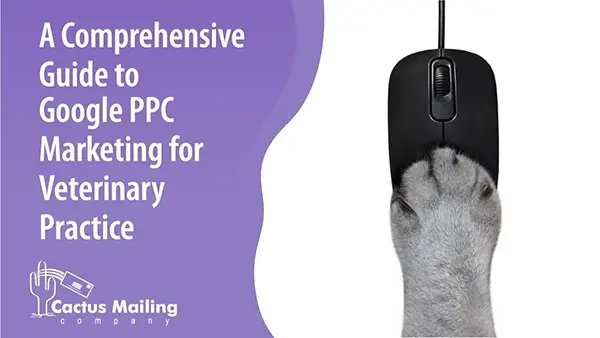
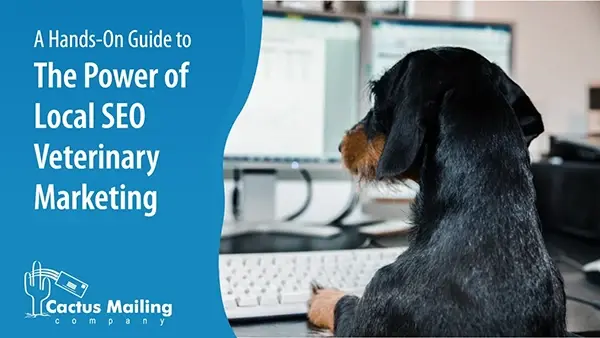
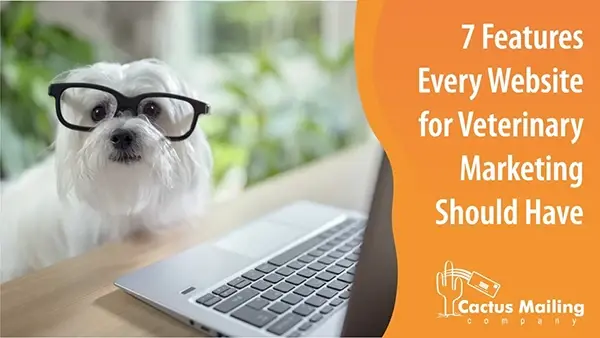
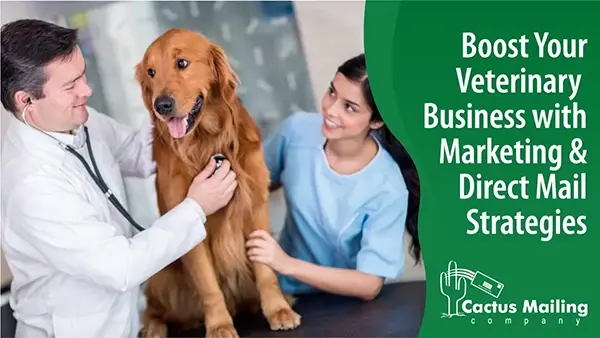
 Jill Brown
Jill Brown